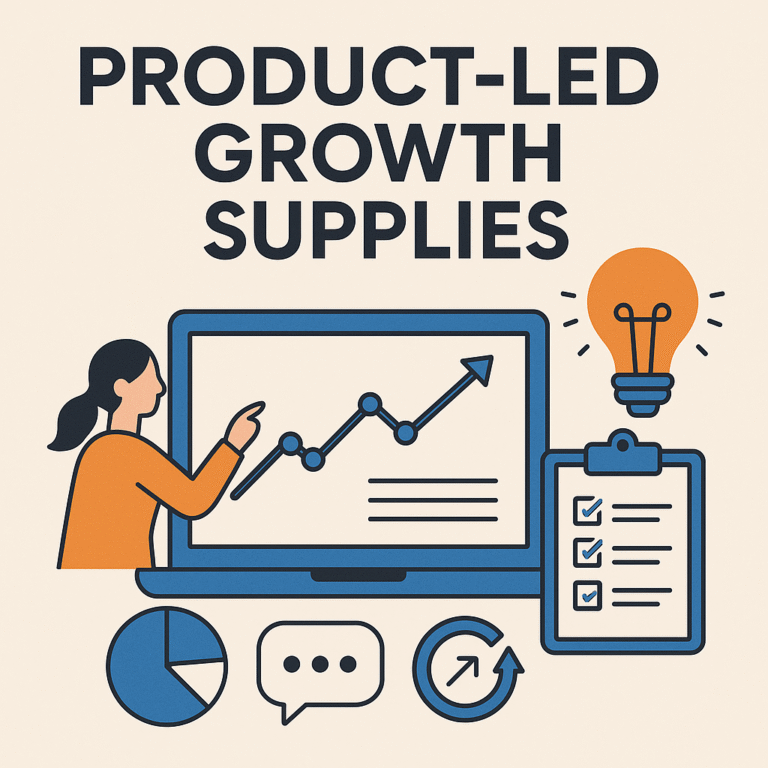Your conversion rates have plateaued despite investing heavily in traffic acquisition. Users browse your product pages, add items to their cart, but somehow fail to complete purchases. Meanwhile, your competitors seem to effortlessly guide users through seamless experiences that result in higher engagement and revenue. What’s the missing piece?
The answer often lies not in dramatic redesigns or expensive marketing campaigns, but in understanding how small psychological triggers influence user behavior. Every day, millions of potential customers make split-second decisions about whether to stay, engage, or leave your digital platform. These micro-moments determine your business success more than any major feature launch.
Behavioral nudges represent a sophisticated approach to user experience design that taps into fundamental human psychology to drive measurable business growth. By strategically implementing small changes that align with natural decision-making patterns, you can significantly improve user engagement, conversion rates, and long-term retention without overwhelming users or compromising their experience.
The Psychology Behind Growth-Focused Nudging
Successful growth strategies must account for how people actually make decisions rather than how we think they should make decisions. Users operate with limited attention spans, cognitive shortcuts, and emotional responses that often override logical analysis.
Understanding these psychological principles allows you to create experiences that feel natural and compelling while driving the behaviors that matter most to your business. The key lies in aligning user goals with business objectives through thoughtful design choices.
Decision-Making Under Pressure
Modern digital users face decision fatigue from countless daily choices. When confronted with your product or service, they’re already cognitively depleted and looking for the path of least resistance. This creates both challenges and opportunities for growth-focused design.
Common decision-making challenges users face include:
- Choice overload: Too many options leading to paralysis
- Information overwhelm: Excessive details creating confusion
- Trust barriers: Uncertainty about product quality or company reliability
- Timing pressure: Fear of missing out or making wrong decisions
- Social validation needs: Seeking confirmation from others
People rely heavily on mental shortcuts called heuristics to simplify complex decisions. These shortcuts include following social proof, trusting authority figures, and avoiding losses more than seeking gains. Effective nudges work with these natural tendencies rather than against them.
The most successful growth strategies recognize that users want to feel smart about their choices while minimizing effort and risk. When you reduce friction and provide gentle guidance, users move more confidently toward conversion.
Cognitive Load and User Experience
Cognitive load refers to the mental effort required to process information and make decisions. High cognitive load leads to user fatigue, mistakes, and abandonment. Growth-focused nudging aims to reduce this load while maintaining user autonomy.
Strategic approaches to managing cognitive load include:
- Progressive disclosure: Revealing information gradually as needed
- Visual hierarchy: Using design to prioritize important elements
- Default selections: Pre-selecting optimal choices when appropriate
- Contextual help: Providing assistance exactly when users need it
- Error prevention: Designing to minimize mistakes before they occur
Users perform better when they can focus on one primary task at a time. Multi-step processes work more effectively than single-page forms with numerous fields. This principle applies across all user interactions, from onboarding to checkout processes.
Memory limitations also influence user behavior. People forget details quickly and struggle to hold multiple pieces of information simultaneously. Effective nudges provide reminders and references at crucial moments without feeling intrusive or repetitive.
Strategic Implementation for Business Growth
Growth-oriented behavioral nudge strategy requires careful planning and systematic execution. Random implementation of psychological principles rarely produces sustainable results. Instead, successful approaches start with clear objectives and user research.
The most effective implementations focus on specific bottlenecks in the user journey where small improvements can yield disproportionate results. These high-impact areas often include onboarding flows, checkout processes, and feature adoption touchpoints.
Identifying High-Impact Opportunities
Data analysis reveals where users struggle most and where nudges can create the biggest impact. Look beyond surface-level metrics to understand the underlying behavioral patterns that drive user decisions.
Priority areas for growth-focused nudging typically include:
- Signup conversion: Moving from visitor to registered user
- Feature adoption: Getting users to try key functionality
- Purchase completion: Reducing cart abandonment rates
- Engagement depth: Encouraging exploration and return visits
- Referral generation: Motivating users to share with others
Funnel analysis shows exactly where users drop off and suggests specific intervention points. However, quantitative data tells only part of the story. Qualitative research reveals the emotional and psychological factors behind user behavior.
User interviews and usability testing uncover hidden friction points and motivational factors that aren’t apparent in analytics data. This deeper understanding enables more targeted and effective nudge strategies that address root causes rather than symptoms.
Building Sustainable Nudge Systems
Sustainable growth requires systems that scale beyond individual tactics. Rather than implementing isolated nudges, successful companies develop frameworks that can be applied consistently across different touchpoints and user segments.
Core components of scalable nudge systems include:
- Design pattern libraries: Standardized components for common nudge scenarios
- Testing protocols: Systematic approaches to validation and optimization
- Performance monitoring: Ongoing measurement of nudge effectiveness
- Team training: Ensuring consistent application across departments
- Ethical guidelines: Maintaining user trust through transparent practices
Documentation becomes crucial as nudge strategies expand across products and teams. Clear guidelines help maintain consistency while allowing for context-specific adaptations. This systematic approach prevents conflicting messages and ensures coherent user experiences.
Regular audits of existing nudges help identify opportunities for improvement and consolidation. Over time, some techniques may become less effective as users adapt or as market conditions change. Systematic review processes keep strategies fresh and relevant.
Measuring and Optimizing for Growth Impact
Measuring the true impact of behavioral nudges requires looking beyond immediate conversion metrics to understand long-term user behavior and business outcomes. Growth-focused measurement considers both user satisfaction and business performance.
The most meaningful metrics connect user behavior changes to revenue impact, customer lifetime value, and sustainable engagement patterns. This comprehensive approach helps justify investment in nudge strategies and guides optimization efforts.
Advanced Analytics for Behavioral Insights
Traditional analytics often miss the nuanced ways that nudges influence user behavior. Advanced measurement approaches provide deeper insights into the psychological mechanisms driving growth improvements.
Key measurement strategies include:
- Cohort analysis: Tracking behavior changes over time
- Attribution modeling: Understanding multi-touchpoint influence
- Segmentation analysis: Identifying which users respond best
- Qualitative feedback: Gathering user perceptions and motivations
- Competitive benchmarking: Comparing performance against industry standards
Multi-variate testing allows for testing combinations of nudges rather than isolated elements. This approach reveals how different psychological principles interact and compound their effects. However, it requires larger sample sizes and more sophisticated analysis.
User sentiment tracking complements conversion metrics by ensuring that growth improvements don’t come at the expense of user satisfaction. The most sustainable nudges enhance rather than manipulate the user experience, creating positive associations with your brand.
Long-Term Growth Sustainability
Sustainable growth requires nudges that create lasting behavior changes rather than temporary improvements. The most effective strategies help users develop new habits and preferences that persist over time.
Behavioral economics research shows that small, consistent nudges often outperform dramatic interventions in creating lasting change. This principle applies directly to digital user experiences where gentle, persistent guidance proves more effective than aggressive conversion tactics.
Long-term success metrics include:
- User retention rates across multiple time periods
- Engagement depth improvements beyond initial conversion
- Organic growth through referrals and word-of-mouth
- Customer lifetime value increases from sustained engagement
- Brand perception and trust measurements
Regular strategy reviews help identify when nudges have achieved their purpose and can be retired or evolved. As users become accustomed to certain interventions, their effectiveness may diminish, requiring fresh approaches to maintain growth momentum.
The most successful companies treat behavioral nudging as an ongoing capability rather than a one-time optimization project. This long-term perspective enables continuous improvement and adaptation to changing user needs and market conditions.
Conclusion
Behavioral nudges represent a powerful yet subtle approach to driving sustainable business growth through improved user experiences. By understanding and working with natural human psychology, you can create digital environments that feel intuitive and supportive while achieving meaningful business objectives.
The key to success lies in implementing systematic, user-centered approaches that prioritize genuine value creation over short-term manipulation. When done thoughtfully, behavioral nudges create win-win scenarios where users achieve their goals more easily while businesses see improved performance across key growth metrics. This alignment of user and business interests forms the foundation for long-term success in competitive digital markets.







